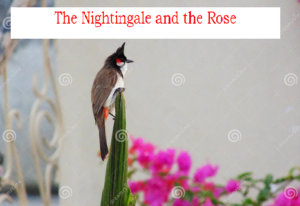“When I Am Dead My Dearest” by Christina Rossetti
Christina Rossetti (1830-94) was a prominent female poet of the Victorian period. Her poem “Song,” which begins with the line “When I am dead my dearest,” is among her most cherished works. This text provides a brief summary and analysis of “When I am dead, my dearest,” focusing on its language and meaning.
Rossetti wrote “Song” (or “When I am dead, my dearest”) in 1848 while still a teenager, although it was not published until 1862, when it was included in her first poetry collection, Goblin Market and Other Poems.
The poem explores a theme similar to John Donne’s “A Valediction: Forbidding Mourning” and serves as a complement to another early Rossetti poem, the sonnet “Remember,” which she composed a year after “When I am dead, my dearest.”
“When I Am Dead My Dearest” by Christina Rossetti is a poem that consists of two stanzas. Here is a stanza-wise explanation:

Stanza 1
When I am dead, my dearest,
Sing no sad songs for me;
Plant thou no roses at my head,
Nor shady cypress tree:
Be the green grass above me
With showers and dewdrops wet;
And if thou wilt, remember,
And if thou wilt, forget.
Explanation
In the first stanza, Rossetti addresses her loved one, requesting that they not mourn her death with sorrowful songs or traditional grave adornments like roses or a cypress tree, which is often associated with mourning. Instead, she wishes for her grave to be covered simply by green grass, nourished by natural elements like rain and dew. She expresses a calm acceptance of either being remembered or forgotten, indicating a sense of peace and detachment from worldly concerns.
Stanza 2
I shall not see the shadows,
I shall not feel the rain;
I shall not hear the nightingale
Sing on, as if in pain:
And dreaming through the twilight
That doth not rise nor set,
Haply I may remember,
And haply may forget.
Explanation
In the second stanza, Rossetti reflects on the state of being dead. She speaks of the absence of sensory experiences such as seeing shadows, feeling rain, or hearing the nightingale’s song. The nightingale, often a symbol of melancholy or sorrow, will continue its song without causing her pain. She envisions herself in a state of perpetual twilight, a serene and timeless existence where the usual markers of time—sunrise and sunset—do not occur. In this dreamlike state, she may or may not remember her past life, indicating an acceptance of whatever comes after death.
Summary
Overall, Rossetti’s poem is characterized by its serene and accepting tone regarding death. She asks her loved one to avoid conventional mourning rituals and instead allow nature to take its course. The poem explores themes of memory, forgetfulness, and the peacefulness of death, suggesting that the poet views death as a release from the sorrows and pains of life.
#When I Am Dead My Dearest #When I Am Dead My Dearest #When I Am Dead My Dearest #When I Am Dead My Dearest #When I Am Dead My Dearest
Read More
“The Silken Tent” by Robert Frost
Victorian Poetry in English Literature
Wordsworth and His Treatment Of Nature
Wordsworth and His Love for Nature
Introduction to Fiction and Non Fiction
Of Death — Francis Bacon (Text)
Of Truth Critical Analysis by Sir Francis Bacon
Of Truth by Francis Bacon Summary
Visit Us on our Facebook Page:






